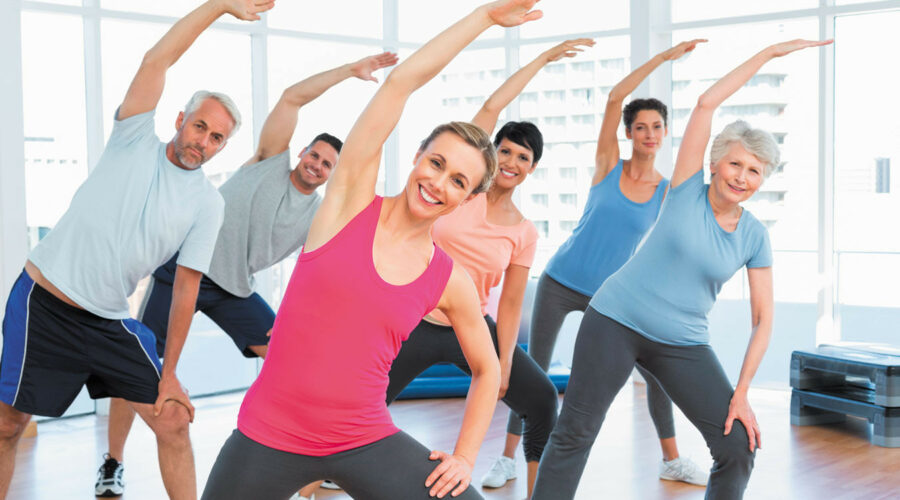Introduction
In today’s fast-paced world, where sedentary lifestyles have become the norm, exercise and fitness play a pivotal role in maintaining overall health and well-being. Regular physical activity offers numerous benefits, ranging from weight management to enhanced mental clarity and reduced risk of chronic diseases. This article delves into the multifaceted aspects of exercise and fitness, exploring the physical, mental, and emotional advantages of adopting an active lifestyle.
Section 1: Understanding the Importance of Exercise
1.1 Physical Benefits of Exercise
- Weight Management: How exercise helps burn calories and maintain a healthy weight.
- Cardiovascular Health: The positive impact of aerobic activities on heart health.
- Muscle Strength and Flexibility: How resistance training enhances muscle tone and flexibility.
- Bone Health: The role of weight-bearing exercises in strengthening bones and preventing osteoporosis.
- Improved Immunity: The relationship between exercise and a bolstered immune system.
- Chronic Disease Prevention: How regular physical activity reduces the risk of diabetes, hypertension, and certain cancers.
1.2 Psychological Benefits of Exercise
- Stress Reduction: The release of endorphins and its role in reducing stress and anxiety.
- Mood Enhancement: How exercise can elevate mood and combat depression.
- Cognitive Function: The impact of physical activity on memory, concentration, and overall brain health.
- Sleep Quality: The connection between exercise and improved sleep patterns.
- Body Image and Self-Esteem: The positive effects of exercise on body confidence and self-esteem.
Section 2: Creating an Effective Exercise Routine
2.1 Setting Goals and Staying Motivated
- The importance of setting realistic and achievable fitness goals.
- How to stay motivated and overcome obstacles on the fitness journey.
- Tracking Progress: Utilizing fitness apps and wearable devices to monitor and measure results.
2.2 Types of Exercise and Choosing the Right Fit
- Aerobic Exercises: Running, cycling, swimming, dancing, and their respective benefits.
- Strength Training: Resistance exercises, weightlifting, and bodyweight workouts.
- Flexibility and Balance: Yoga, Pilates, and other activities that improve flexibility and balance.
- Combining Different Activities: The benefits of cross-training and incorporating variety into routines.
2.3 Designing a Safe and Effective Workout Plan
- Understanding the principles of progressive overload for continuous improvement.
- Importance of Warm-Up and Cool-Down: How to prepare the body for exercise and reduce the risk of injury.
- Listening to the Body: Recognizing signs of overtraining and the importance of rest and recovery.
Section 3: Nutrition and Exercise: A Synergistic Relationship
3.1 Fueling the Body for Optimal Performance
- Balanced Diet: The role of carbohydrates, proteins, fats, vitamins, and minerals in fitness.
- Hydration: The importance of proper hydration during and after exercise.
- Pre- and Post-Workout Nutrition: The best foods to eat before and after workouts for energy and recovery.
3.2 Special Considerations: Exercise and Different Life Stages
- Pregnancy and Exercise: Guidelines for safe and beneficial workouts during pregnancy.
- Exercise for Children and Adolescents: The significance of physical activity for growth and development.
- Exercise for Older Adults: Tailoring routines to address age-related changes and maintain mobility.
Section 4: Overcoming Common Barriers to Exercise
4.1 Time Constraints and Scheduling
- Tips for fitting exercise into a busy lifestyle.
- Making the most of short bursts of activity throughout the day.
4.2 Lack of Equipment or Access to a Gym
- Bodyweight exercises and workouts that require minimal equipment.
- Utilizing household items for resistance training.
4.3 Staying Active While Traveling
- Portable exercise equipment and bodyweight routines for on-the-go fitness.
Section 5: Promoting Long-Term Commitment to Fitness
5.1 Building a Support System
- Finding exercise buddies and participating in group fitness classes.
- The benefits of social support in maintaining consistency.
5.2 Celebrating Progress and Embracing Setbacks
- Recognizing and celebrating milestones on the fitness journey.
- Strategies for bouncing back from setbacks and staying positive.
Conclusion
Incorporating regular exercise and fitness into one’s life is not just a lifestyle choice; it is a commitment to health, happiness, and longevity. By understanding the benefits, designing effective workout routines, nourishing the body with proper nutrition, and overcoming obstacles, we can unlock the transformative power of exercise and achieve our full potential for a healthier and more fulfilling life. Remember, every step counts on the journey to a fitter you!





